In north Greece we are used to saying “there is nothing like Halkidiki”. But within its exaggeration, this particular phrase hides truths. It is a place that combines the mountain with the sea to the superlative degree. An earthly paradise with turquoise waters, picturesque settlements, intense nightlife (and not) entertainment, good food and superb hospitality. Come and meet its second leg, Sithonia.
A few words about the area
Sithonia is a peninsula of the prefecture of Halkidiki and is essentially the so-called "second leg". It is surrounded by the Sigitiko gulf to the east (known as the Gulf of Mount Athos) and the Toroneos gulf to the west (known as the Gulf of Kassandra). The main characteristic of Sithonia is the golden beaches, the green pine forests and the picturesque villages, where the ideal combination of the blue sea and the green of nature is achieved. Underneath I have selected for you what I believe a first-time visitor to the area should see.
10) Pyrgadikia
Pyrgadikia may be marginally unlocated in Sithonia and belong to the Municipality of Panagia, but it would be impossible not to include them in this list. This particular coastal village is built amphitheatrically on top of a hill, strongly reminiscent of the architecture of the Greek islands. In fact, all the houses and accommodations in Pyrgadikia have a terrific view, since they overlook the picturesque port of the village and the Sigitiko gulf. Their trademark is, of course, the wonderful beach, with its green waters and fine sand, which attracts the interest of many tourists in the summer months.

9) Ormylia-Psakoudia
In the ninth place I have placed Ormylia and its port, which is none other than Psakoudia. Ormylia is a town established at the foot of Mount Holomontas, with an estimated population of 4282 inhabitants! Its oldest building is the central Church of Saint George (1818), while it is also worth visiting the chapels of Saint George, Holy Trinity and Saint Demetrius.
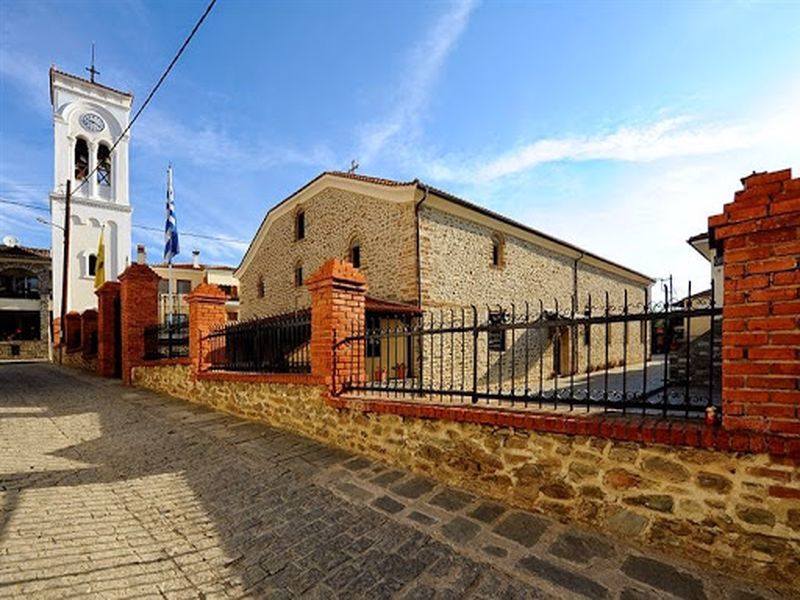
Psakoudia is known as the "Gateway to the Sithonia Peninsula". It is a miniature coastal village, which gathers the greatest tourist interest of the wider region, mainly because of its excellent beach. There you will find many taverns, cafes and bars practically on the sea, offering high quality products and services.

8) Parthenon
No, you did not read wrong, Sithonia also has its Parthenon. Obviously, this is not an ancient temple, but a traditional settlement located at an altitude of 320 meters. This village now has only six permanent residents, but it is one of the most historic settlements in northern Greece as it is mentioned as early as the 10th century, while there are evidences of life from prehistoric times and antiquity! Restored mansions, picturesque alleys and a marvelous view of Toroneos Gulf are just a few of the reasons that rank Parthenon among the most beautiful villages in the whole of Halkidiki.
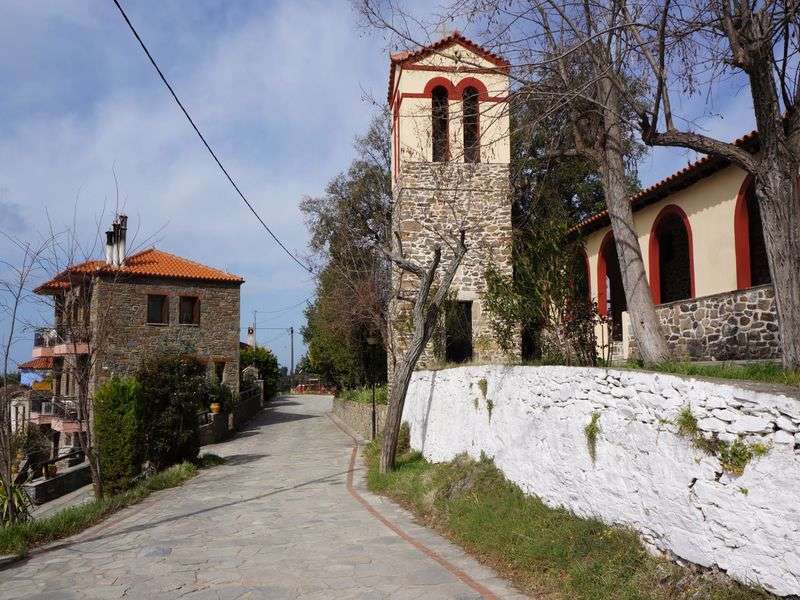
7) Sykia
Sykia is the largest, oldest and southernmost village of Sithonia. It is a traditional settlement with houses of Agioritean architecture, whitewashed buildings, orthodox churches and traditional taverns with rustic local delicacies. There are several versions for the name of the village, with the most prevalent being that it got its name from an old fig tree (the word sykia in Greek means fig tree), around which it was built. Another version relates the name to the shadow of Mount Athos and another that it came from a paraphrase of the ancient city Siggos, which over the years Siggos became Sigia and finally Sykia. The village may be mountainous, but 3 kilometers from there you will find the stunning beach of Sykia away from the hordes of tourists.
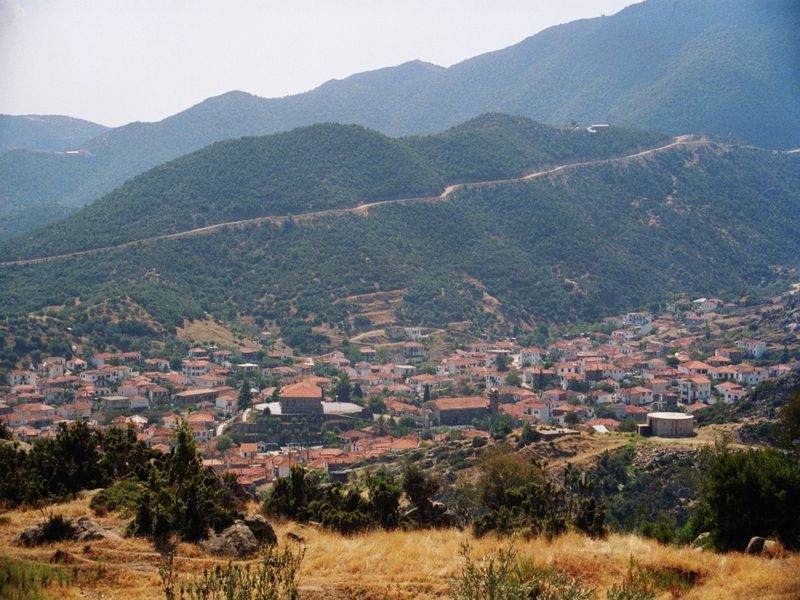
6) Ormos Panagias
The port village of Ormos Panagias has taken its name from the homonymous Byzantine church that exists there, while it is known for its fish market in the port. It is located on the northeastern part of the foot, which makes it an ideal starting point for cruises to the Toroneos Gulf for dolphin watching, walks overlooking Mount Athos. Trani Ammoudia, the beach of the village, is also called by the locals "Copacampana of Greece", due to its long length and exotic landscape. There you will find dozens of taverns, cafes and bars, while if you are courageous you can rent a boat to explore the islets opposite Vourvourou.
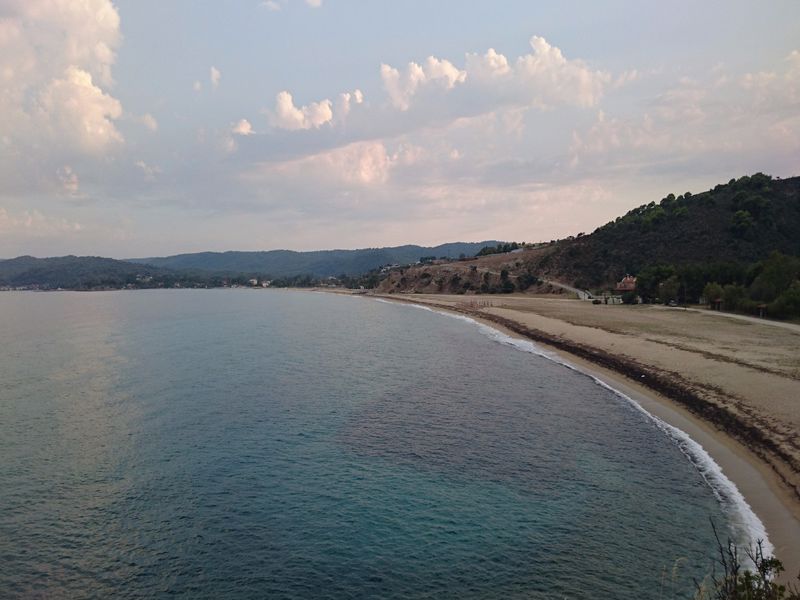
5) Sarti
On the southeast side of Sithonia, we came across a "relaxed" village that combines the mountain with the sea and is called Sarti. This is a seaside resort known for its boardwalk around a rocky bay. Of particular interest is the fact that the huge beach of Sarti, with its blue-green shallow and crystal clear waters, is awarded every year with a blue flag! But the surprises of this village do not stop there. Following the uphill roads, you will find yourself in the oldest part of Sarti, with its whitewashed houses and small shops selling painted tiles and local honey. At this point is also the museum of Afisia, which is housed in a former mountain chapel overlooking Mount Athos and includes exhibits related to the creation and development of the settlement of Sarti.
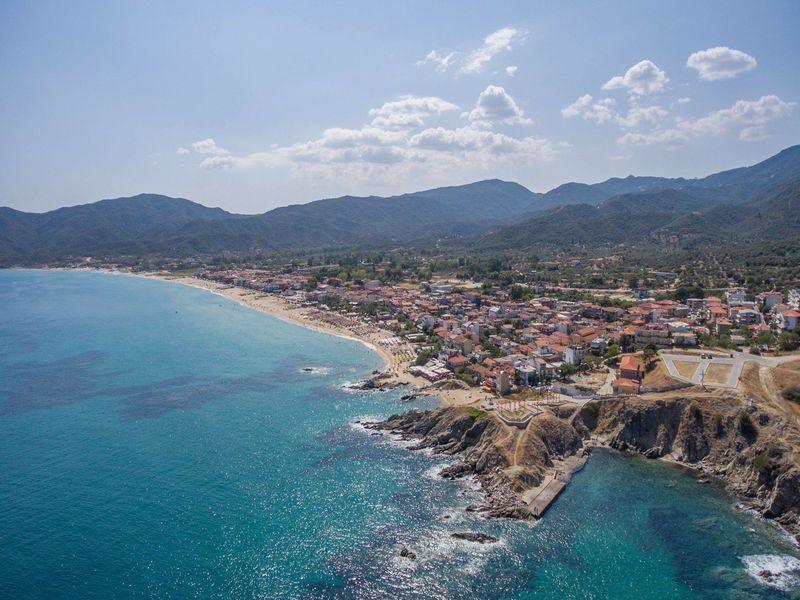
4) Toroni-Porto Koufo
Toroni is located in the southwestern part of Sithonia and according to many it has one of the most beautiful beaches in the country. It has about 233 permanent residents, who are mostly engaged in tourism and fishing. According to findings, Toroni has been inhabited since prehistoric times, since it was founded by Chalcidians of Evia during the 8th-7th century BC.
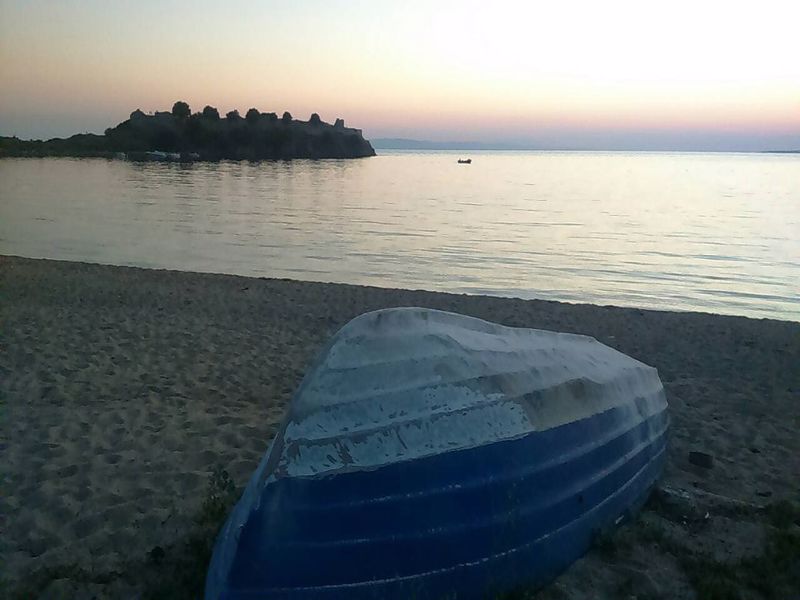
A breath away from Toroni we meet one of my favorite places in the area. I am referring, of course, to Porto Koufo. It is a small natural harbor in which a charming fishing village is developed. There you will find fresh fish and seafood all year round, and according to the locals it is the best spot to admire the sunset.
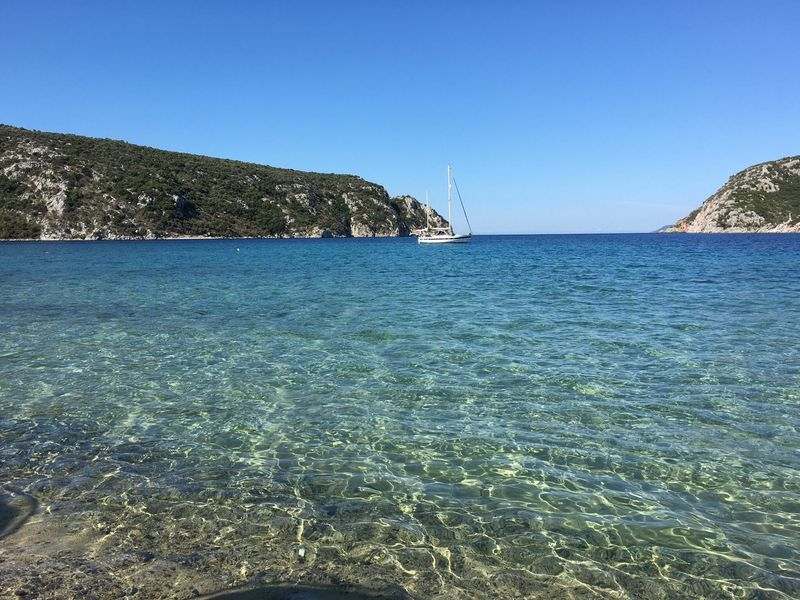
3) Vourvourou
One of my favorite areas in Sithonia is Vourvourou. It is a small fishing village built around rocky coves, having the characteristics of lake, mountain and forest together! In the area there are sheltered beaches with shallow and blue waters, such as Karidi and Xifara, while renting a boat you will be able to explore the nine unique and uninhabited islets that exist just opposite, with the largest and most interesting Diaporos. Those of you who have a special preference in the mountains, you can walk the hiking trails, which pass through the pine forest of the hinterland and climb the slopes of Mount Itamos. From its top you will enjoy the magnificent bay of Vourvourou and maybe if you are lucky to see a carefree deer or another wild animal.

2) Neos Marmaras
A breath from the top we find the largest seaside village of Sithonia, Neos Marmaras. It extends around a rocky promontory and is built on three hills. In my opinion this is the most cosmopolitan part of the second leg, with many elements completely different from the whole region. In this town is concentrated almost everything, as a result of which it is always bustling with life, as many visit it for the fulfillment of some obligations or choose it for their shopping. N. Marmaras is also known for the Marina of the Porto Carras complex and the only floating port in Greece, which host hundreds of boats throughout the year. Among the attractions worth mentioning is the area of Tripotamos, with the homonymous Metochi, as well as the small islet that is right opposite, Kelyfos, which looks like a turtle.
1) Nikiti
What can one say about Nikiti? Initially, it is the capital of the Municipality of Sithonia and for many the most idyllic village of Halkidiki. The golden beaches with the clear blue waters, which even have blue flags, the dense pine forests that reach to the sea, the beautiful stone buildings and the picturesque alleys, there is no way they will not charm you. Of course, Nikiti is not a typical seaside village, since it is an ancient settlement with a long history. It took its name from the land of Neakitos, the site of the Xenophon Monastery located on Mount Athos, while a prehistoric settlement has been found at the site of Kastri, which testifies to the existence of life in the area since ancient times! An attraction of the village is the old settlement, which records, a history of more than seven hundred years. I'm talking about a gem hidden in a ravine in the hills above the modern settlement. The church of Saint Nikitas and the early Christian Basilica of Sophronios also deserve attention.
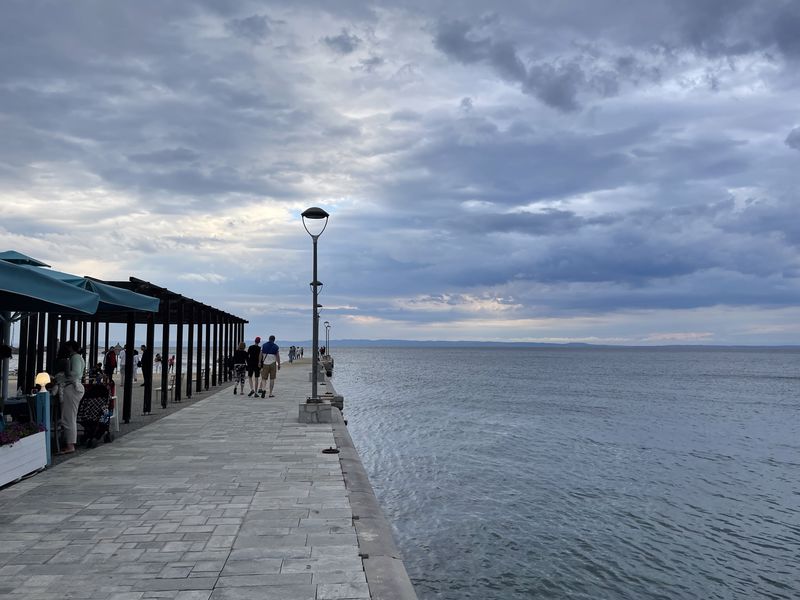
Where to stay
The second leg of Halkidiki has many beauties, and the choice of accommodation must be very careful if you want to explore it all. My opinion is you should prefer something in the northern part of Simonia either in Nikiti or in Vourvourou, two villages located at a strategic point. My proposal is Summer House Studios & Apartments in Nikiti. It is a family-friendly hotel, with elegantly decorated rooms, fully renovated and fully equipped.
What to eat
Being in Sithonia, you should definitely try some of its famous local products. First and best, of course, is honey. Halkidiki is considered the "mother of beekeeping" so get ready to taste the most beautiful honey of your life. You will also find high quality tsipouro and ouzo, delicious cheese and spoon sweets or jams. Also, do not forget trying fish and seafood, which are fresh and delicious since they are fished on the same day. For delicious and fresh seafood, I recommend Akrogiali!
Read my article about the first leg of Halkidiki, Kassandra here
If this article seemed interesting or contributed to your quality information, then you can like my facebook page: o_thessalonikios or follow me on instagram!
Mouzakidis Pantelis








